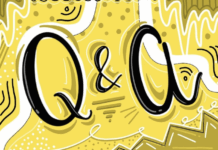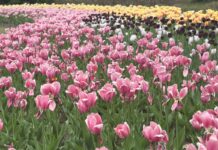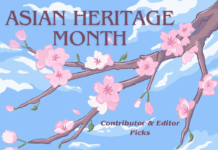Directed by Abdellatif Kechiche
Distributed by Mongrel Media and Métropole Films Distribution
Blue may not seem like the warmest colour, but if you plan on seeing this film, you might just change your mind about that.
Set in France, the director of this Palme d’Or-winning film, Abdellatif Kechiche, brings his audience a stunning story of love and heartbreak in a sensual depiction of a young girl’s gradual discovery of her sexuality.
Opening in a typical French suburb, we are introduced to the film’s main character, Adèle, played by an actress of the same name, Adèle Exarchopoulos. A typical high school student, the audience sees Adèle enter into a relationship with a boy for what is presumed to last several months before breaking up with him.
This presents a gateway for her to begin exploring her tastes, and Kechiche’s direction and liberal use of intimate, close-up camera shots amplifies the sexuality and passion that Adèle is seeking, which she eventually finds with Emma, brilliantly portrayed by Léa Seydoux.
Although gay and lesbian relationships are generally accepted in today’s world, Kechiche reveals a darker side of Adèle’s new-found happiness.
Emma and Adèle continue their relationship and we see that, while both girls appear to be completely comfortable with each other, Adèle continues to conceal her preference for women from almost everyone else in her life. This ultimately forces Adèle to re-evaluate herself, and the people in her life.
As this movie is rated R, viewers should know there are several explicit sex scenes. However, these serve the director’s purpose by showing the full extent of the affair between these two women.
Of course, the colour blue is everywhere within the film. Even though it is used ironically in the title itself, viewers will notice the subtle hints of blue. In particular Emma’s hair, dyed a brilliant shade of bright blue to match her eyes, is entrancing, becoming an important part of the symbolism of the film.
Blue initially means happiness to Adèle, and surrounds everyone and everything that is good in her life. Kechiche’s clever placement of the colour allows the audience to gradually realize what, or who, is Adèle’s priority, as her confidence in others changes over time to become self-confidence.
Blue is the Warmest Colour is a heart-wrenching film, and portrays a relationship with an intimacy and reality that is rarely seen on screen.






